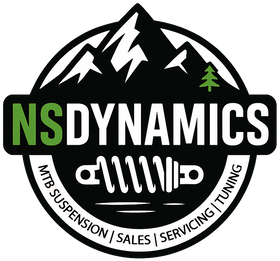Suspension Setup FAQ's
Suspension Setup FAQs
How do I know what spring rate I need?
Use our Spring Rate Calculator to find the ideal spring rate based on your bike, riding style, and weight. Coil spring rate is critical to achieving proper sag and performance.
What is sag and why does it matter?
Sag is the amount your suspension compresses under your own weight in a neutral position. Setting it correctly ensures your suspension performs optimally and uses its travel properly.
How do I measure sag?
You can use a shock pump and measuring tool or watch our sag tutorial videos. Refer to the 'Measuring Sag' resources on our Suspension Setup Calculator page for guidance.
What is a good sag percentage for forks and shocks?
Generally 20–25% for forks and 25–35% for rear shocks, depending on your riding style and terrain. Use our Setup Calculator to find your ideal range.
What is mounting hardware and how do I measure it?
Mounting hardware refers to the spacers and sleeves used to attach your rear shock to the frame. It’s usually measured in millimetres as width × bolt diameter (e.g. 22.2 × 8mm). TF Tuned has an excellent guide on their website if you're unsure.
How often should I check or adjust my suspension?
It’s a good habit to check sag, air pressure, and clicker settings every few rides. Conditions change, and so does your riding. Regular checks keep your setup dialled in.
What’s the difference between compression and rebound?
Compression controls how your suspension reacts when it compresses (bumps, landings), while rebound controls how quickly it returns to full extension. Both are crucial to control and comfort.
What does LSC and HSC mean?
LSC = Low-Speed Compression. HSC = High-Speed Compression. LSC affects slow movements like braking and cornering, while HSC manages sharp impacts like jumps or rocks.
What does rebound do?
Rebound damping controls how quickly your suspension returns to full extension after being compressed. Too slow can cause packing down; too fast can make the bike feel bouncy and unstable.
What pressure should I run in my air shock or fork?
This varies based on rider weight, bike, and terrain. Use sag to determine correct pressure. Our calculator can help guide you.
What’s volume spacing or progression tuning?
Volume spacers (for air suspension) adjust how ramped the suspension feels. More spacers = more progression = harder to bottom out. Fewer spacers = more linear feel.
Why does my suspension feel harsh or bouncy?
This could be due to incorrect spring rate, rebound/compression imbalance, or lack of service. Use our Setup Calculator and check your service history.
What settings should I start with?
Always begin with base settings from the manufacturer. Our calculator or tuning guide provides a safe baseline. From there, fine-tune based on your ride feel.
Can I use settings from another rider with the same fork?
You can, but it's not always accurate. Spring rate and damping needs vary based on rider weight, style, and terrain. Always check sag and tailor to you.
Should I match my fork and shock feel?
Not necessarily. Front and rear suspension often serve different purposes. Tune each individually for balance, but don’t obsess over matching them perfectly.
What’s the best setting for jumps or flow trails?
Slightly faster rebound and more progression usually help for jumps and flow trails. But always experiment. Try small changes and assess the feel.
Why is setup so subjective?
Every rider has different preferences, weight distribution, and terrain. What feels great to one person may feel awful to another. Learn the concepts and experiment.
Where can I find a tuning guide?
Our Suspension Setup Calculator is a great place to start. We also link to articles from Vorsprung and other experts in our resources section.
Is there such a thing as perfect suspension setup?
No setup is perfect. Most riders aim for a balanced setup that works well 99% of the time. Obsessing over perfection can lead to worse results. Ride, adjust, and enjoy.

